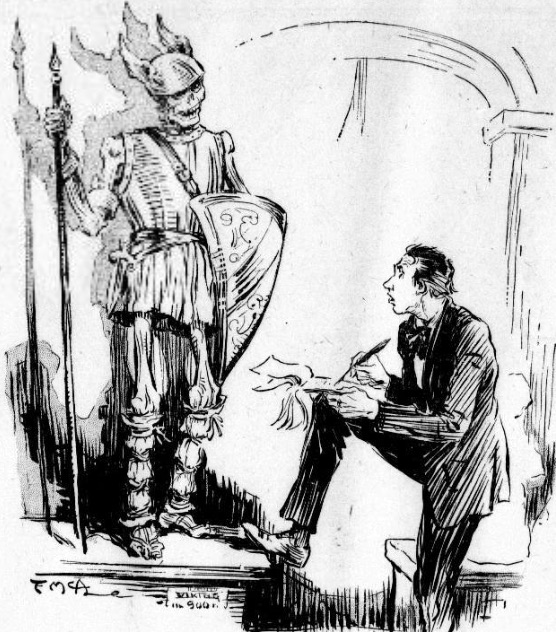
What came to be known as the “Skeleton in Armor” was discovered in Fall River, Massachusetts in the early 1830s. Many believed it was the body of a Norseman, but the truth is that we will never know for certain whether it was a Viking traveler or some other long ago traveller because the remains have long since been destroyed.

Discovery of the Body
There are two accounts as to how the body was found. The more common story was that workmen were excavating a hill in 1833 and uncovered the top of the skeleton’s head. It was then unearthed by these same men. A second account says that a woman discovered the body in 1831. The woman was doing some spring cleaning and needed sand for scouring the brass and tinware. She went to the sandbank and began loosening the sand. As she did this, she uncovered the skull and rushed home to tell her husband. He returned with a friend and they uncovered the rest of the skeletal remains.
What It Looked Like
Regardless of who discovered the skeleton and which year it was found, a detailed description of the remains were published in 1837. The American Magazine of Useful and Entertaining Knowledge, published in Boston, stated that the body was wrapped or covered in coarse, dark brown bark. Inside the outer covering was a finer covering made of coarse cloth.
The man inside this cocoon was dressed in a copper breast plate. Unfortunately, the breast plate was so heavily corroded that it could not be determined if there were any engravings on it.
Below the plate, the man wore a belt made of brass tubing that was held together with sinew.
The skeleton in armor had been buried in a sitting position, facing east and the rising of the sun.
His Weapons
Near the right knee of the remains was a quiver of arrows. Unlike the Native American flint or stone arrows, these arrow tips were thin, flat, and made from brass. The quiver that held the arrows appeared to have been made of bark, but it fell to pieces shortly after being exposed to the air. The shafts of the arrows were also mostly rotted and lost to history.
Phoenician
Upon the full discovery of the remains, many historians stepped forward with theories as to the origin of the skeleton. One theory was that it was the remains of a Phoenician.
It was possible that a Phoenician vessel was taken off course by strong weather and came to the shores of Massachusetts long before the first known European settlers ever stepped foot on the continent. However, many scholars felt that it was highly unlikely that the Phoenicians would have been driven so far north given that they were such highly skilled seafarers.
Viking
The most popular theory of origin was that the skeleton was a Viking. Henry Wadsworth Longfellow helped popularize this idea in his poem, “The Skeleton in Armor,” first published in 1841. The poem, or ballad, tells the story of an aged Viking, even though it was generally believed that the skeleton belonged to a young man because its teeth were in good condition.
Native American
There was also the possibility that the skeleton was Native America. In 1843, Dr. Phineas W. Leland wrote that he had no doubt that the remains were that of an American Indian. Others speculated that the Native American may have traded with seafarers and therefore attained his brass armor which was not something the Native Americans were known to have made.
Museum Display
After the skeleton warrior was completely uncovered and his burial objects studied, he was gathered up and placed on display in the Fall River Athenaeum. His brass arrows were placed in a glass case and also shown to all who were curious about the find.
The Mystery
Then, in 1843, tragedy struck and the athenaeum was destroyed, along with the bones and arrows. All that was left behind were the accounts of the discovery, a sketch of the remains, and theories about the remains that would forever be remembered as the Skeleton in Armor.

